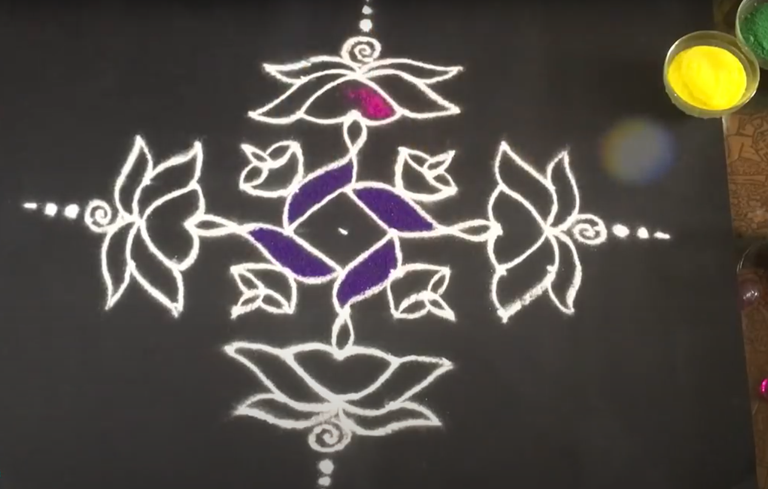Hello Friends,
Rangoli is an exquisite artistic expression that has its roots in India. This practice is distinguished by the utilisation of a wide variety of materials to produce intricate designs on the floor or tabletop.
Rangoli holds immense importance in the lives of Hindus. Rangoli serves a purpose that extends beyond mere decoration; it is a method of forging a link with the divine.
Rangoli designs may vary depending on the festivals being celebrated, encompassing simple geometric forms, floral shapes, or petal shapes.
They are often awe-inspiring and meaningful, and can be used to commemorate any type of event.

Elaborate designs, created collaboratively by a large group of individuals, can likewise be utilised for their production.
The geometric patterns may potentially represent profound religious symbolism. Furthermore, the origin of Rangoli can be observed in Hindu mythology.
Further allusions to rangoli can be discovered in mythological tales and folklore, such as the Ramayana. There are options for both modern and traditional Rangoli designs.
Designs are usually derived from nature, although they can also be abstract or beautiful wall hangings.
Most often, they are breathtaking and unique, and they have the ability to elicit sentiments of joy and serenity.
We often craft rangoli patterns for Diwali, Onam, Pongal, and various other festivities.
Photography Details
| Device | Redmi Note 12 Pro |
|---|---|
| Lens | Default Lens |
| Edit | Snapseed |
| Location | India |
| Captured by | @zessy |